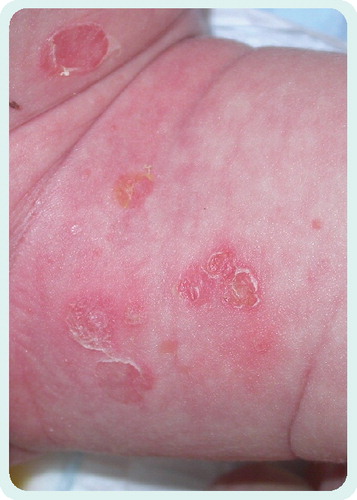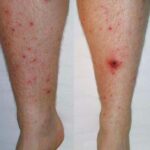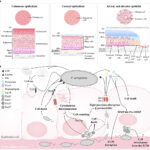Providencia species, particularly Providencia stuartii and Providencia rettgeri, are gram-negative, facultatively anaerobic bacilli belonging to the Enterobacteriaceae family. While more commonly implicated in urinary tract infections, Providencia has emerged as an opportunistic pathogen in healthcare-associated skin and skin structure infections (SSSIs), especially among elderly or immunocompromised patients.
These organisms are frequently isolated in polymicrobial chronic wounds, pressure ulcers, and post-surgical sites, exhibiting a concerning trend of multidrug resistance (MDR), making timely identification and targeted therapy crucial.

Epidemiology and Risk Factors for Providencia Skin Infections
The prevalence of Providencia infections in cutaneous sites is rising, particularly in long-term care settings and intensive care units.
Major Risk Factors Include:
- Prolonged hospitalization
- Indwelling catheters or medical devices
- Chronic pressure ulcers
- Diabetes mellitus
- Decubitus ulcers in immobile patients
- Immunosuppression or advanced age
- Prior broad-spectrum antibiotic exposure
In many cases, Providencia colonization precedes infection, especially when barrier defenses are compromised.
Pathophysiology and Virulence Factors
Providencia species contribute to tissue damage through a variety of mechanisms:
- Biofilm formation: Enhances persistence on necrotic tissue and surfaces.
- Fimbrial adhesins: Facilitate adherence to epithelial and wound tissues.
- Urease production: Alters local pH, promoting bacterial survival and tissue irritation.
- Extended-spectrum beta-lactamases (ESBLs): Mediate resistance to multiple antibiotic classes.
These features make Providencia particularly resilient in chronic, non-healing wound environments.
Clinical Manifestations of Providencia Skin Infections
The clinical spectrum ranges from mild superficial involvement to severe necrotic infections. Most infections are polymicrobial, with Providencia acting in synergy with anaerobes and other gram-negative organisms.
Typical Symptoms:
- Foul-smelling exudate
- Delayed wound healing
- Ulcer with necrotic slough or granulation failure
- Fever and systemic signs in advanced cases
- Purulence despite standard topical care
Diagnostic Approach to Cutaneous Providencia Infection
Accurate diagnosis relies on microbiological confirmation and clinical correlation.
Key Diagnostic Steps:
- Swab or tissue biopsy: Preferred over surface samples to isolate Providencia spp.
- Gram stain: Gram-negative rods observed in conjunction with other organisms
- Culture and sensitivity: Critical due to high MDR rates
- Wound imaging: CT or MRI may be necessary to exclude deep space infection or osteomyelitis
In chronic wounds, repeat cultures may be necessary to distinguish colonization from true infection.
Antimicrobial Treatment Options for Providencia Skin Infections
Due to rising resistance, antimicrobial selection must be based on susceptibility data. Empirical regimens should account for possible polymicrobial involvement.
| Infection Severity | Recommended Antibiotic Options |
|---|---|
| Mild/moderate | TMP-SMX, ciprofloxacin, or piperacillin-tazobactam (if susceptible) |
| Severe or MDR strains | Carbapenems (e.g., meropenem), aminoglycosides (e.g., amikacin) |
| ESBL-producing isolates | Carbapenems remain the gold standard |
| Multidrug resistance | Consider colistin or fosfomycin in consultation with infectious disease experts |
Treatment Duration:
Generally ranges from 10 to 21 days depending on clinical severity and wound progression.
Surgical and Wound Management Strategies
In conjunction with antibiotic therapy, aggressive wound care is vital to eliminate necrotic burden and enhance tissue regeneration.
Surgical Interventions:
- Debridement: Removes infected and devitalized tissue
- Incision and drainage: For localized abscess formation
- Vacuum-assisted closure (VAC): Enhances perfusion and reduces biofilm
Supportive Wound Care:
- Moisture balance: Hydrocolloid or antimicrobial dressings as indicated
- Glycemic control: Essential in diabetic patients
- Nutritional optimization: Supports immune and tissue repair processes
Complications of Untreated or Mismanaged Infections
- Progression to necrotizing fasciitis
- Chronic osteomyelitis
- Sepsis or septic shock
- Tissue loss requiring reconstructive surgery
- Antibiotic resistance development
Failure to promptly identify and manage Providencia can lead to serious morbidity, particularly in frail patients.
Preventive Measures in Clinical Practice
Healthcare Strategies:
- Aseptic technique during wound care procedures
- Antibiotic stewardship to limit selection pressure
- Regular surveillance cultures in high-risk units
Patient-Focused Prevention:
- Skin care protocols for immobile or incontinent patients
- Routine wound evaluation for early signs of infection
- Proper hygiene and wound dressing adherence
Early intervention remains the cornerstone of successful prevention and outcome improvement.
Providencia infections of the skin and soft tissue, while less common, pose significant therapeutic challenges due to their association with chronic wounds and multidrug resistance. Accurate identification, timely antimicrobial therapy, surgical intervention, and rigorous wound management are critical to ensuring resolution and preventing systemic complications. A multidisciplinary approach is essential to optimize outcomes in these complex infections.

